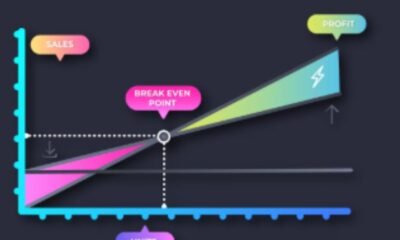BLOG
Understanding the ∴ Symbol in Math

Introduction: What the ∴ Symbol Represents in Mathematical Thinking
The therefore symbol in math, represented as ∴, is a compact and elegant way to denote the conclusion of a logical argument or a final step in a mathematical proof. Though it may appear simple, this triangular symbol holds a significant place in the language of mathematics and logic, offering a visual shorthand that encapsulates reasoning, deduction, and clarity. Used to signify that what follows is a result of what precedes it, the therefore symbol has played an important role in communicating the logical flow within mathematical statements.

The Visual and Logical Meaning Behind ∴
The ∴ symbol is made up of three dots arranged in a triangle. This configuration, while minimalistic, carries the weight of deductive reasoning. In symbolic logic and mathematical writing, it tells the reader that a conclusion has been reached based on previously established premises.
In the broader context of logical notation, this symbol is used to express a deductive conclusion. For example, if one were to write
Historical Background: Origins of the Therefore Symbol
The use of ∴ dates back to the 17th century and has roots in Euclidean geometry and early symbolic logic. Philosophers and mathematicians, such as Johann Rahn, began integrating symbolic shorthand into mathematical notation to enhance clarity and brevity in written arguments. Over time, this symbol gained acceptance as a universally recognized way to mark conclusions in formal reasoning.
In classical mathematical proofs, the therefore symbol helped mathematicians avoid lengthy textual explanations by creating a more visual flow of logic. While it is not as common in formal publications today, its educational value and simplicity still make it a staple in math classrooms and informal settings.
The Role of ∴ in Mathematical Proofs and Reasoning
Proofs are fundamental to the discipline of mathematics, and the ∴ symbol often appears as part of a chain of logical deductions. For example, in geometric reasoning, once a set of properties is proven—like the equality of angles or congruence of sides—the therefore symbol is used before the final conclusion to signify that the argument has reached its end.
In symbolic logic, which underpins much of modern computing and mathematical philosophy, symbols like ∴ help in expressing complex reasoning patterns more efficiently. They assist in differentiating between premises and conclusions, allowing readers to follow the logic step-by-step.
Moreover, when comparing the therefore symbol with others such as → (implies) or ⇒ (logical implication), it’s important to understand the nuance. While all convey progression or causation, ∴ emphasizes the conclusion rather than the process.
Typing and Writing the Therefore Symbol
In today’s digital age, using special characters like ∴ requires a bit of technical knowledge. On Windows, one can insert the symbol using Alt + 8756, and on Mac, it can be found via character viewer under mathematical symbols. For those using LaTeX, which is common in academic math writing, the command \therefore produces the symbol.
This functionality is especially useful for math educators, students writing proofs, or anyone working with mathematical typesetting. Knowing how to insert this symbol correctly maintains the readability and professionalism of mathematical content.
Real-World and Educational Applications
While the ∴ symbol might not appear frequently in high-level mathematical journals, it is widely used in educational settings, particularly when teaching logic, geometry, or algebra. It helps students visualize the flow of logic, making it easier to understand how one step leads to another.
In fields like philosophy, law, and computer science, where formal logic is crucial, similar notation systems are used. The value of learning such symbols is not just academic—it extends to critical thinking, structured argumentation, and even programming logic.
For example, in algorithm design, one must deduce outcomes based on inputs and conditions. Although ∴ isn’t used directly in code, the structured thinking it encourages is incredibly relevant.
When Not to Use the Therefore Symbol
Despite its utility, the ∴ symbol is not always appropriate. In formal academic papers, especially those written for peer-reviewed math journals, it’s often avoided in favor of full-text transitions such as “thus,” “hence,” or “therefore.” Some style guides consider it informal or archaic.
Additionally, it’s important not to overuse the symbol in mathematical writing. It should appear only where a clear logical conclusion is being drawn. Using it mid-proof or out of context can confuse readers and obscure the logical structure rather than clarify it.
Comparing ∴ to Other Mathematical Symbols
It’s worth noting how ∴ compares to other symbols within logical and mathematical notation:
- ⇒ (Implies): Indicates that one statement logically implies another but doesn’t necessarily mean a conclusion has been reached.
- → (Arrow): Often used in functions or sequences, showing direction or mapping rather than deduction.
- Q.E.D.: Stands for quod erat demonstrandum, meaning “that which was to be demonstrated.” It’s a more formal alternative often used to close proofs.
Each symbol has its place, and knowing when to use ∴ over these alternatives is part of mastering the language of mathematics.

Frequently Asked Questions (FAQs)
1. What does the ∴ symbol mean in math?
The ∴ symbol means “therefore” and is used to indicate that what follows is a conclusion logically derived from previous statements.
2. How do you type the therefore symbol?
You can type it using Alt + 8756 on Windows, use the character viewer on Mac, or type \therefore in LaTeX to render the symbol.
3. Where is the therefore symbol used?
It is primarily used in mathematical proofs, logical reasoning, and sometimes in philosophical arguments to denote deductive conclusions.
4. Is ∴ still commonly used today?
While it’s less common in formal publications, it is still widely used in educational materials and informal math writing for clarity and brevity.
5. What’s the difference between ∴ and ⇒?
∴ denotes a conclusion drawn from previous premises, while ⇒ signifies a logical implication, often used within symbolic logic to connect statements rather than finalize them.
Conclusion: Why ∴ Still Matters in Math
The symbol in math serves as more than just a decorative punctuation mark—it represents the culmination of reasoning, the endpoint of logical thought. While it may not dominate formal mathematics papers today, it remains a critical educational tool, helping students and thinkers alike develop structured, logical arguments.
BLOG
Besos Meaning: A Journey into the Heart of Latin American Culture

Besos is derived from the Spanish language, where it translates to “kisses.” However, the meaning of besos goes beyond a simple translation. It’s a term that encompasses a range of emotions, from affection and love to passion and intimacy.
The Cultural Significance of Besos
In many Latin American cultures, besos are an integral part of daily life. They’re a way to show affection, greet one another, and express love. The cultural significance of besos is deeply rooted in the values of warmth, hospitality, and closeness.

The Different Types of Besos
While the term “besos” is often associated with romantic love, it’s not the only context in which it’s used. Besos can be exchanged between family members, friends, and even as a greeting or farewell.
- A beso on the cheek is a common greeting in many Latin American countries.
- A beso on the lips is often reserved for romantic partners or loved ones.
- A beso on the forehead or hand can be a sign of respect, affection, or blessing.
“I remember my abuela giving me besos on the forehead every night before bed. It was a special moment that made me feel loved and safe.”
The Emotional Significance of Besos
Besos are more than just a physical gesture; they’re a way to convey emotions and connect with others. The act of giving or receiving a beso can evoke feelings of comfort, security, and love.
FAQs
Q: What is the meaning of besos in Spanish?
A: Besos is the Spanish word for “kisses.” It’s a term used to describe a range of affectionate gestures, from romantic kisses to friendly pecks on the cheek.
Q: How do you use besos in a sentence?
A: You can use besos in a sentence to express affection or love, such as “Dale besos a tu familia de mi parte” (Give your family a kiss from me).
Q: What is the cultural significance of besos in Latin America?
A: Besos play a significant role in Latin American culture, where they’re used to show affection, greet one another, and express love.
Q: Can besos be used in non-romantic contexts?
A: Yes, besos can be used in non-romantic contexts, such as between family members or friends. It’s a way to show affection and closeness.
Conclusion
Besos, we discover that it’s more than just a word – it’s a way to connect with others and express our emotions. Whether you’re looking to deepen your understanding of Latin American culture or simply want to show affection to those around you, besos is a term that’s worth exploring further.
BLOG
Luxury Cruise Passengers: Staying Safe on the High Seas

Luxury cruises often traverse through exotic waters, some of which are notorious for piracy. The Gulf of Aden, the Indian Ocean, and parts of Southeast Asia are known hotspots where pirates have been active. These areas are often near popular cruise routes, putting luxury cruise passengers at risk.
Piracy Tactics: How Pirates Target Luxury Cruises
Pirates have become increasingly sophisticated, using tactics like GPS spoofing and fake ship identities to target unsuspecting vessels. They often look for easy prey, such as slow-moving ships or those with lax security. Luxury cruises, with their high-value passengers and cargo, can be attractive targets.
The Human Impact: Stories from Luxury Cruise Passengers
“I was on a luxury cruise in the Gulf of Aden when we received a piracy warning. The crew immediately took action, increasing security measures and altering our course. It was a harrowing experience, but thanks to their quick response, we were safe.” The fear and uncertainty that come with a piracy warning can be unsettling, but being prepared and knowing what to expect can make all the difference.
Staying Safe: Precautions and Measures for Luxury Cruise Passengers
To minimize the risk of piracy, luxury cruise lines have implemented various security measures. These include:
- Traveling in convoys or with naval escorts
- Implementing advanced security systems, such as radar and surveillance cameras
- Conducting regular security drills and training for crew members
- Increasing security personnel on board

What Luxury Cruise Passengers Can Do
While cruise lines take necessary precautions, passengers can also play a role in staying safe. Being aware of the risks and taking simple precautions, such as staying informed about piracy hotspots and following crew instructions, can help minimize the risk of piracy.
Piracy Warning Systems: How Luxury Cruises Stay Ahead
Luxury cruise lines use advanced piracy warning systems to stay informed about potential threats. These systems provide real-time updates on piracy hotspots and suspicious activity, enabling crews to take proactive measures to avoid danger.
The Role of Technology in Piracy Prevention
Technology plays a vital role in preventing piracy. Advanced systems, such as satellite tracking and AI-powered surveillance, help cruise lines stay one step ahead of pirates. These technologies enable crews to respond quickly and effectively in the event of a piracy warning.
FAQs
Q: What should I do if I receive a piracy warning on my luxury cruise?
A: If you receive a piracy warning, follow the instructions of your crew immediately. They are trained to handle such situations and will take necessary precautions to ensure your safety.
Q: Are luxury cruises more vulnerable to piracy than other types of cruises?
A: Luxury cruises can be attractive targets for pirates due to their high-value passengers and cargo. However, luxury cruise lines often have advanced security measures in place to minimize the risk.
Q: How can I stay informed about piracy hotspots and safety measures on my luxury cruise?
A: Your cruise line will provide you with information about piracy hotspots and safety measures in place. You can also stay informed through government travel advisories and industry reports.
Q: Can I travel safely on a luxury cruise despite the risk of piracy?
A: Yes, with the right precautions and awareness, you can travel safely on a luxury cruise. Cruise lines take piracy seriously and have measures in place to protect passengers.
Conclusion
Luxury cruise, staying informed about piracy risks and taking necessary precautions can help ensure a safe and enjoyable journey. By understanding the risks and being aware of the measures in place to prevent piracy, you can relax and enjoy your time on board.
BLOG
Mandarin for Mandarin: Tips and Tricks for Language Learners

Mandarin can be a rewarding and enriching experience, especially when you focus on learning Mandarin for Mandarin. By doing so, you can:
- Improve your pronunciation and intonation
- Develop a deeper understanding of Chinese culture and history
- Enhance your career opportunities in China or with Chinese companies
Immersing Yourself in the Language
One of the most effective ways to learn Mandarin for Mandarin is to immerse yourself in the language. This can be done by:
- Watching Chinese movies and TV shows
- Listening to Chinese music and podcasts
- Speaking with native Mandarin speakers
For example, “I started watching Chinese dramas with English subtitles and it really helped me improve my listening skills and get used to the natural flow of the language.”

Tips for Learning Mandarin for Mandarin
When it comes to learning Mandarin for Mandarin, there are several tips to keep in mind:
- Focus on tones and pronunciation
- Practice speaking and listening regularly
- Use language learning apps and resources
Using Language Learning Apps
There are many language learning apps available that can help you learn Mandarin for Mandarin. Some popular options include:
- Duolingo
- HelloTalk
- Pleco
FAQs
Q: What is the best way to learn Mandarin for Mandarin?
A: The best way to learn Mandarin for Mandarin is to immerse yourself in the language by watching Chinese media, speaking with native speakers, and practicing regularly.
Q: How can I improve my Mandarin pronunciation?
A: You can improve your Mandarin pronunciation by listening to native speakers, practicing speaking regularly, and using language learning apps that focus on pronunciation.
Q: What are some common challenges when learning Mandarin for Mandarin?
A: Some common challenges include mastering tones, understanding grammar and syntax, and finding opportunities to practice speaking and listening.
Q: Can I learn Mandarin for Mandarin on my own?
A: Yes, you can learn Mandarin for Mandarin on your own with the right resources and motivation. However, it’s also helpful to work with a language exchange partner or tutor to get feedback and support.
Conclusion
Mandarin for Mandarin requires dedication, persistence, and the right resources. By immersing yourself in the language, practicing regularly, and using the right language learning tools, you can achieve fluency and unlock new opportunities. Whether you’re a beginner or advanced learner, there’s always room to improve and refine your Mandarin skills.
-

 TECH6 months ago
TECH6 months agoApple iPhone 17: Official 2025 Release Date Revealed
-

 EDUCATION6 months ago
EDUCATION6 months agoHorizontal Translation: How to Shift Graphs
-

 EDUCATION6 months ago
EDUCATION6 months agoUsing the Quadratic Formula
-

 EDUCATION6 months ago
EDUCATION6 months agoThe Meaning of an Open Circle in Math Explained
-

 HEALTH6 months ago
HEALTH6 months agoGoodNever: Wellness, Simplified
-

 EDUCATION6 months ago
EDUCATION6 months agoWhy Does m Represent Slope?
-

 EDUCATION6 months ago
EDUCATION6 months agoHow to Solve Quadratic Equations 2
-

 ENTERTAINMENT6 months ago
ENTERTAINMENT6 months agoGoing Live: How to Stream on TikTok from Your PC
